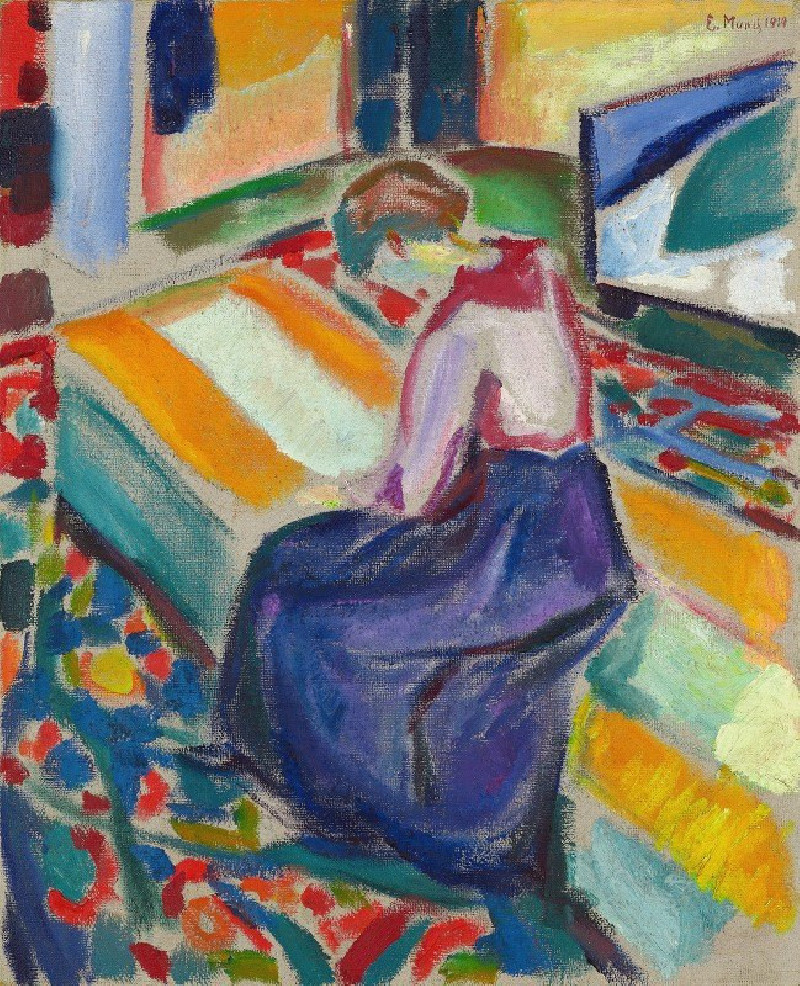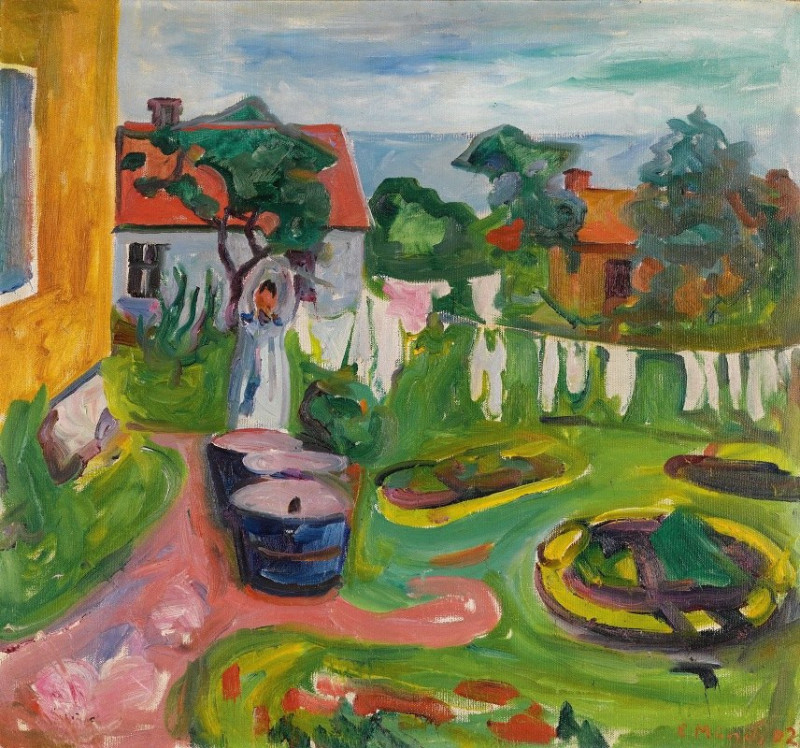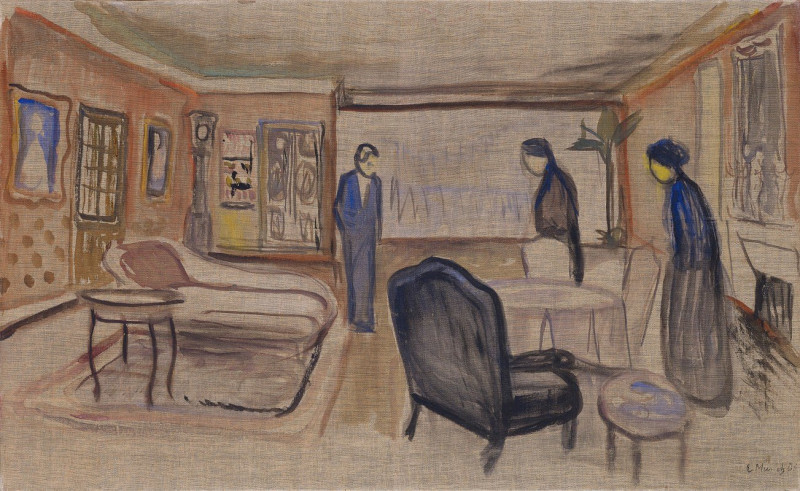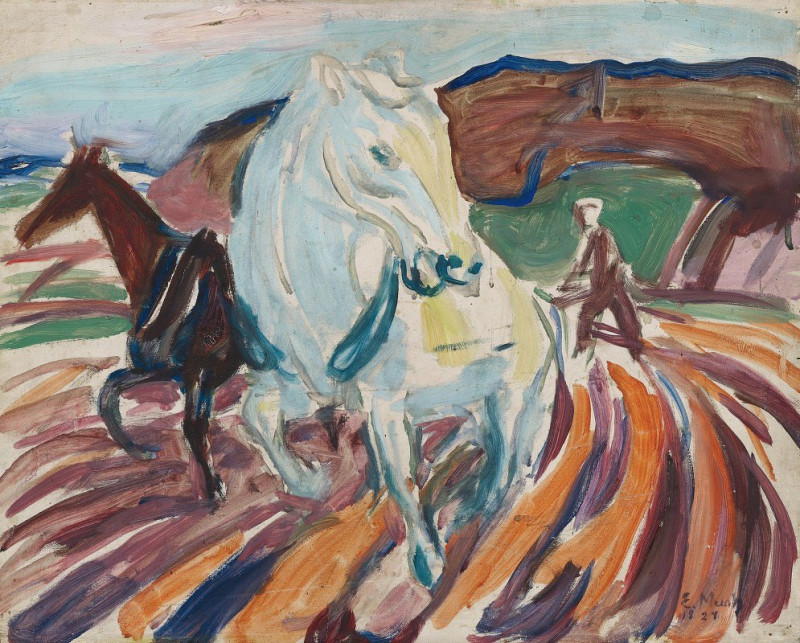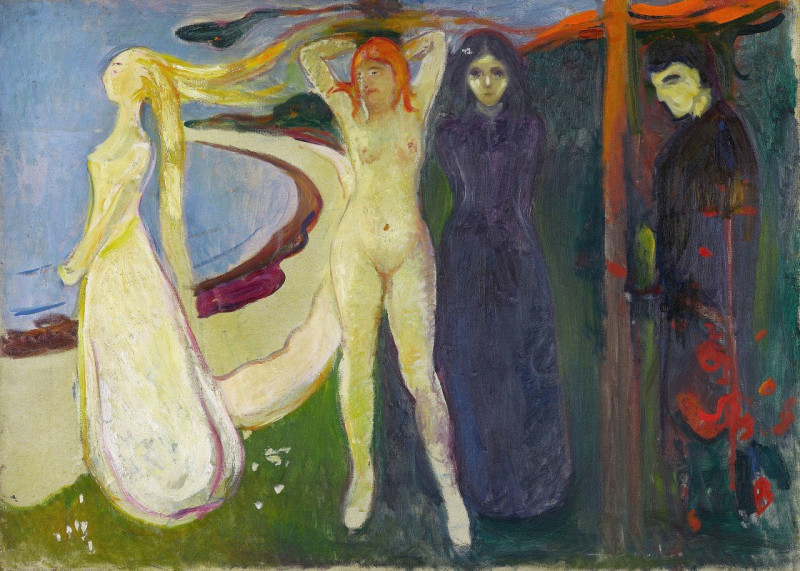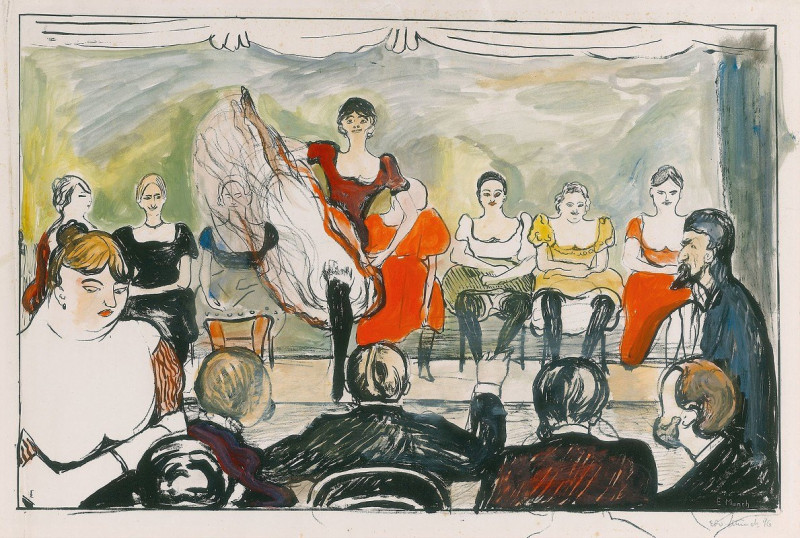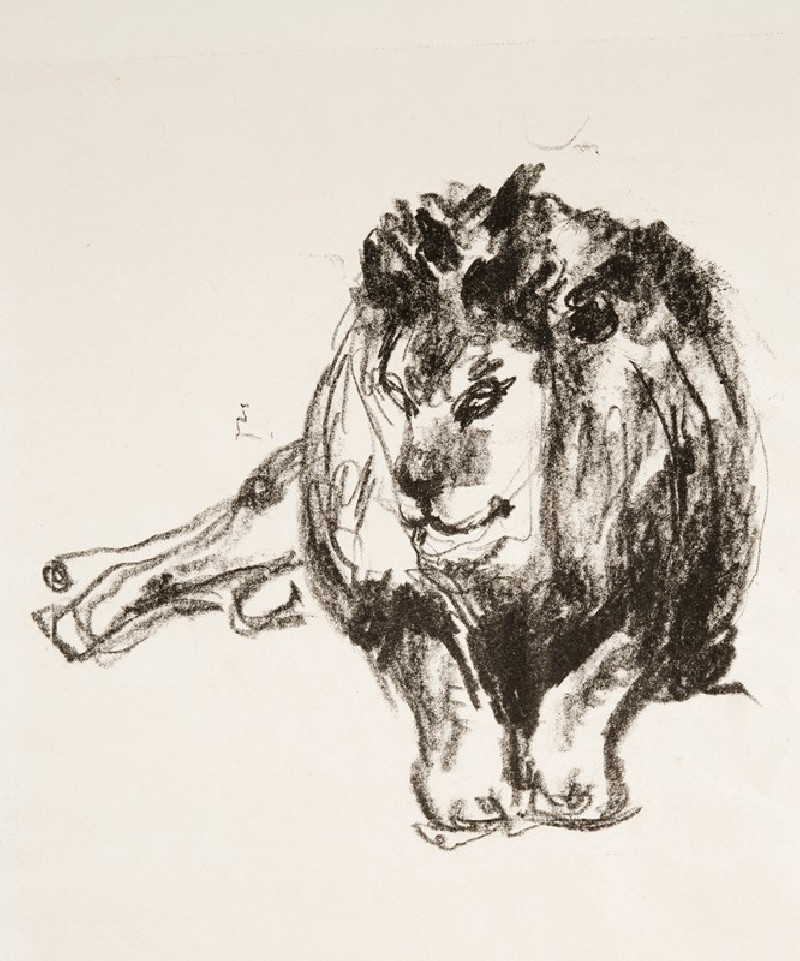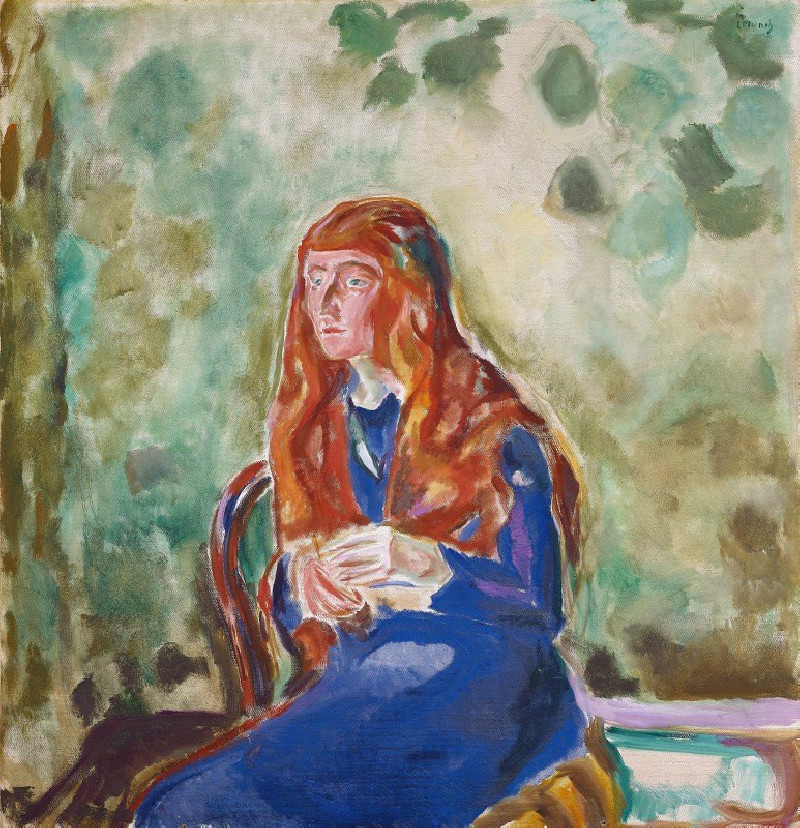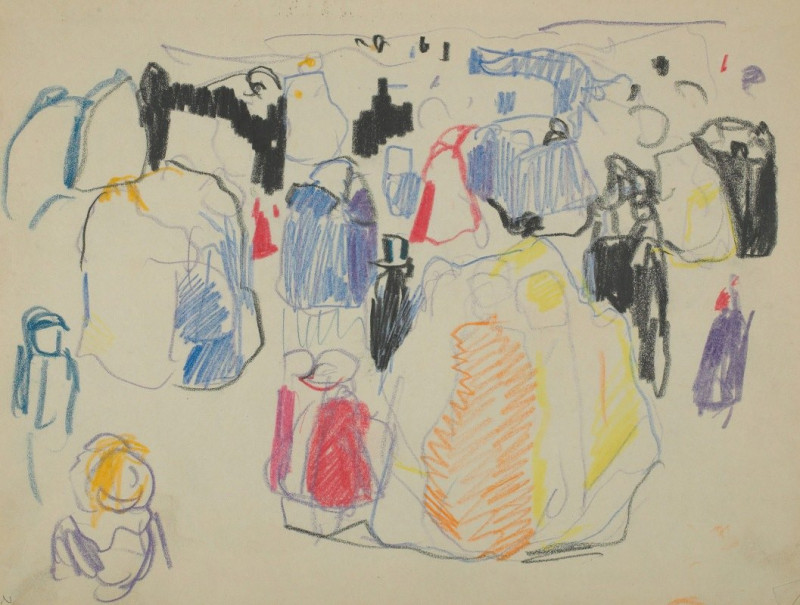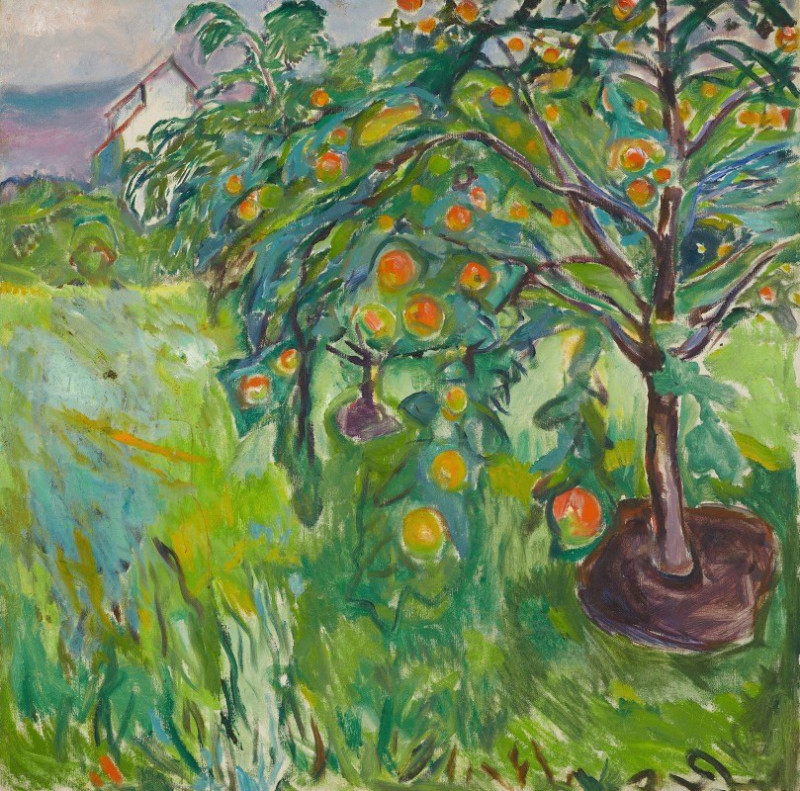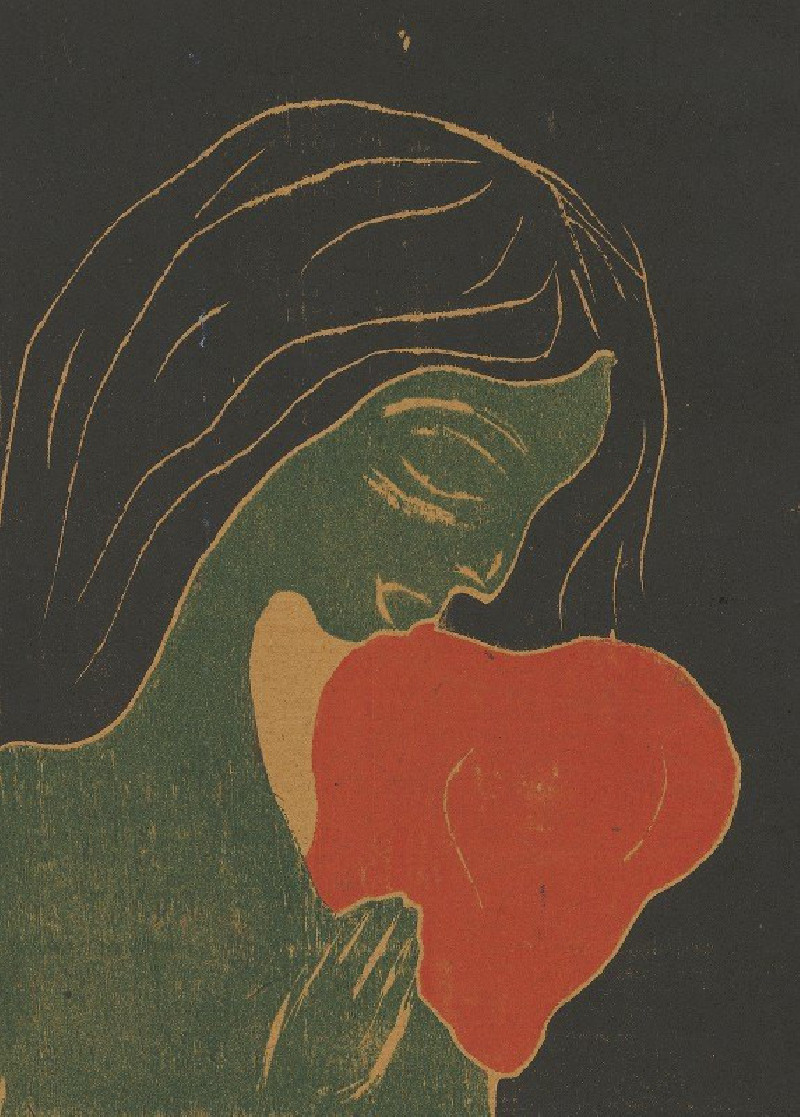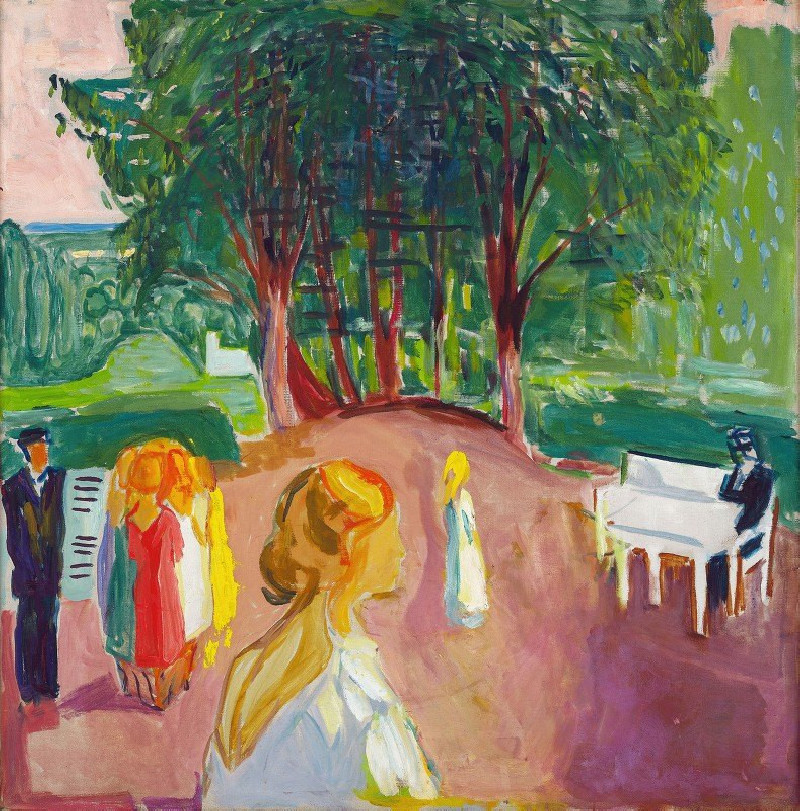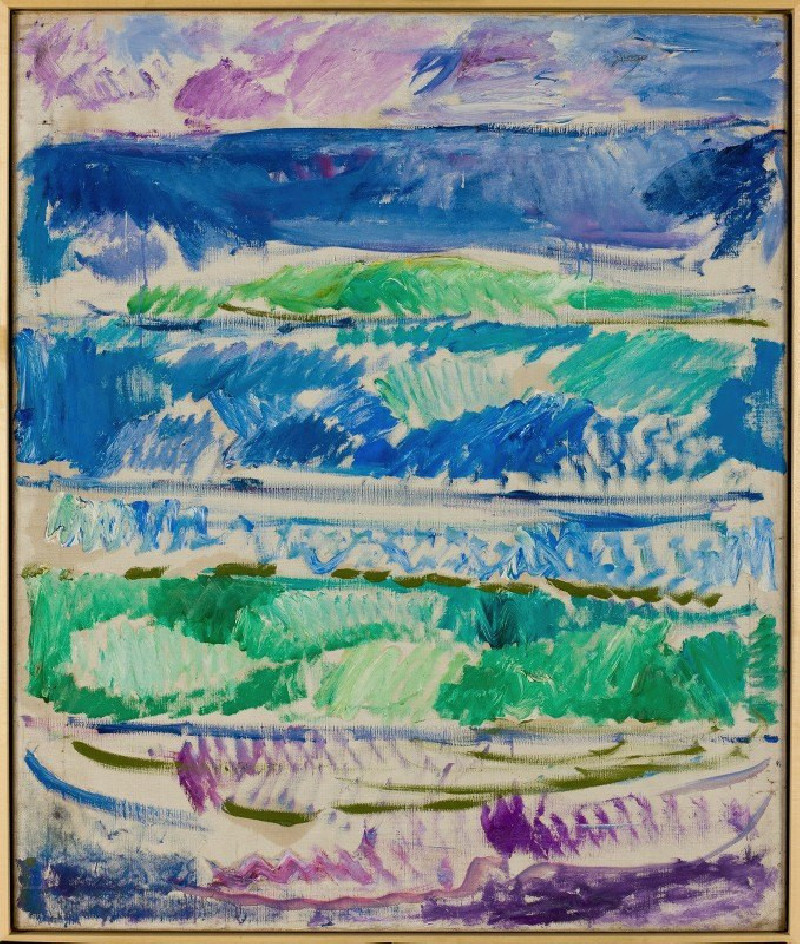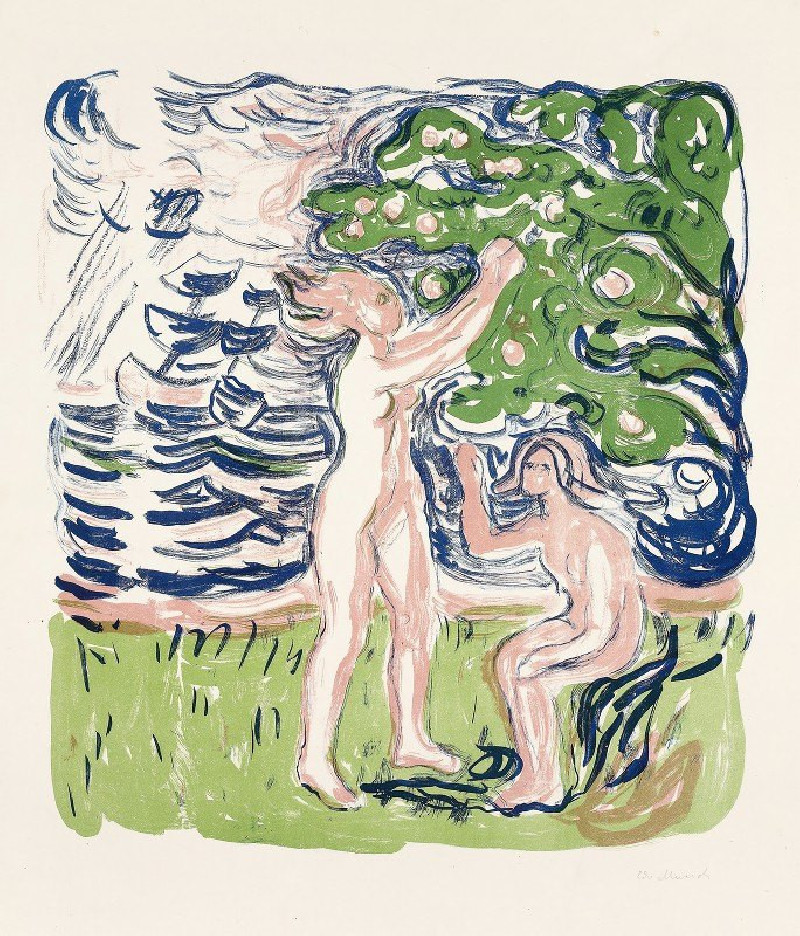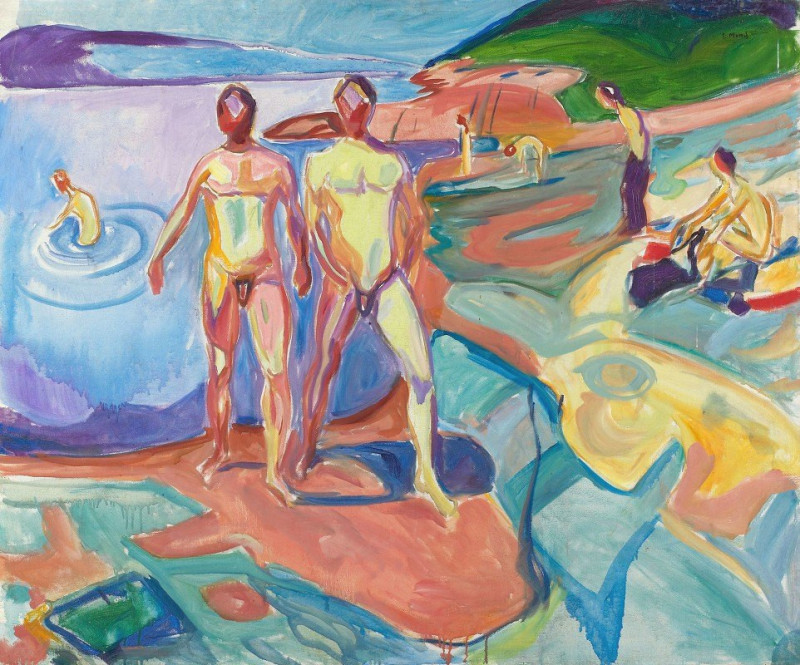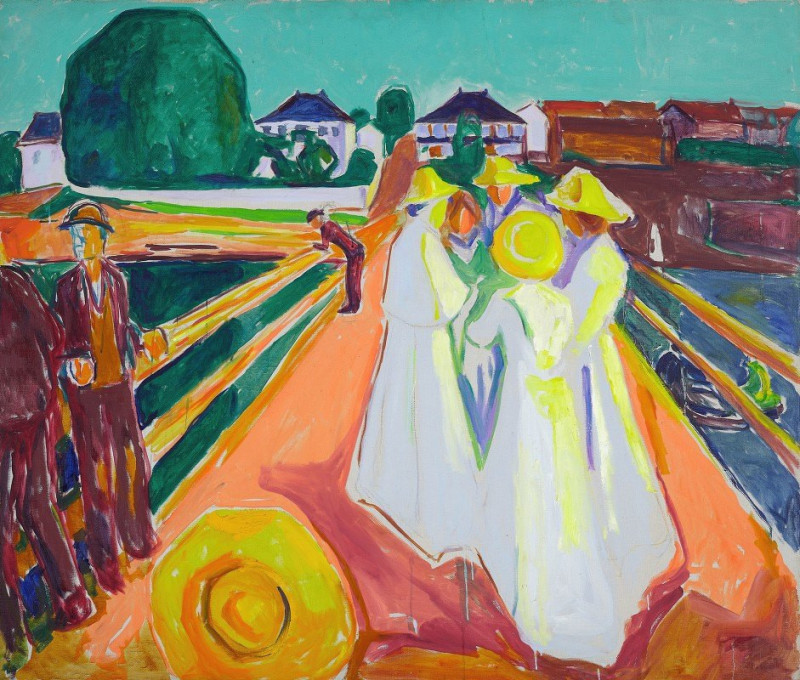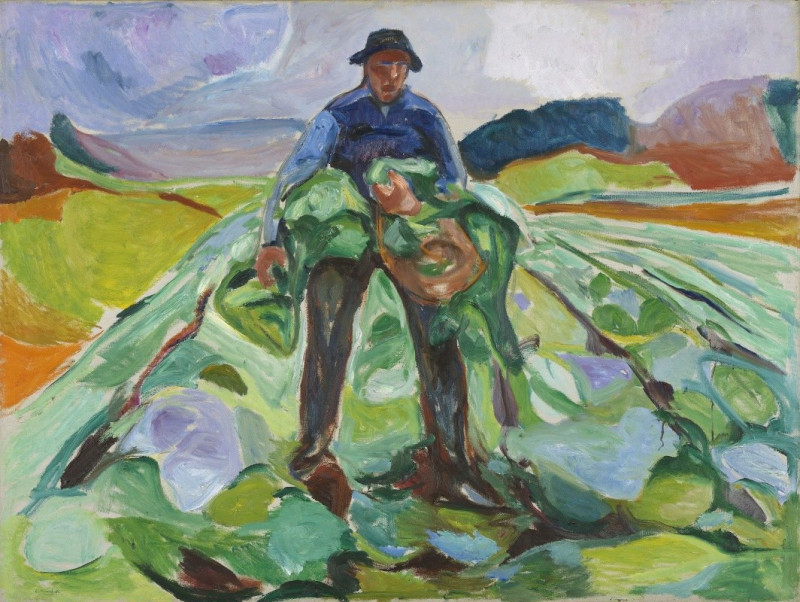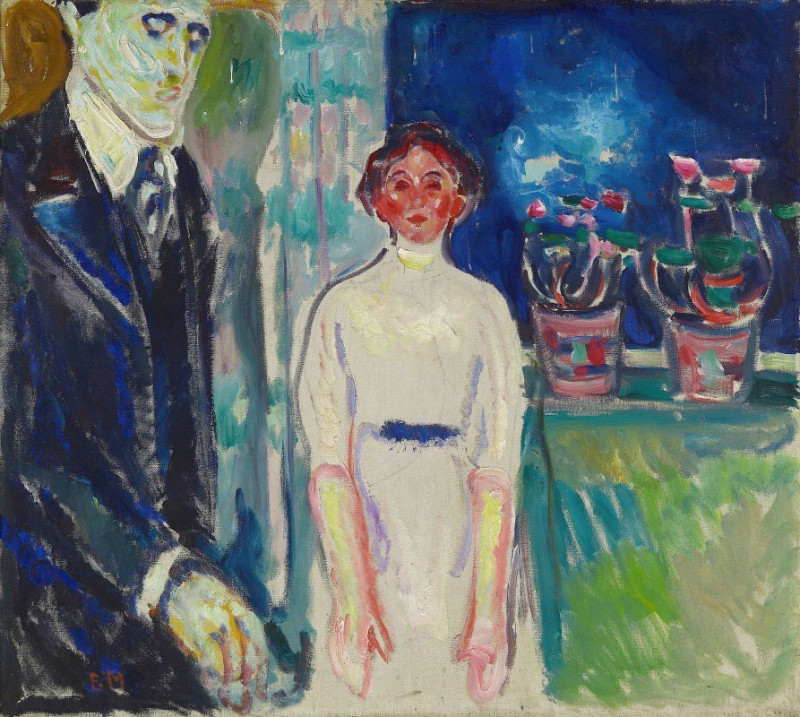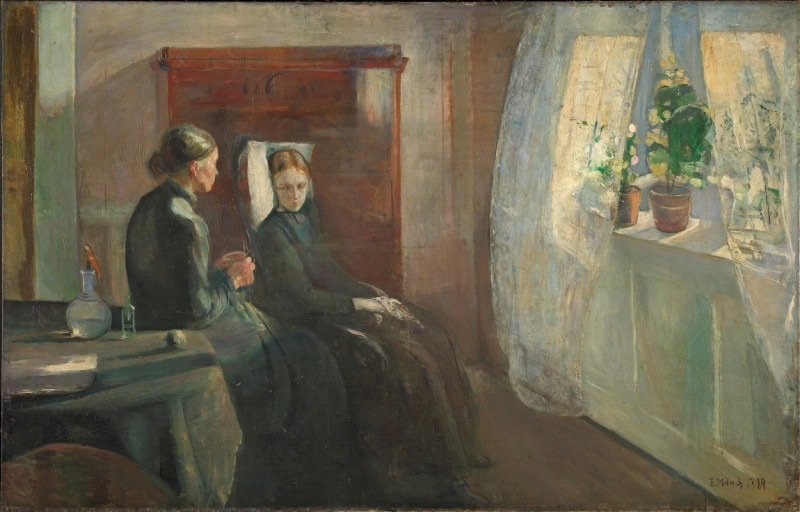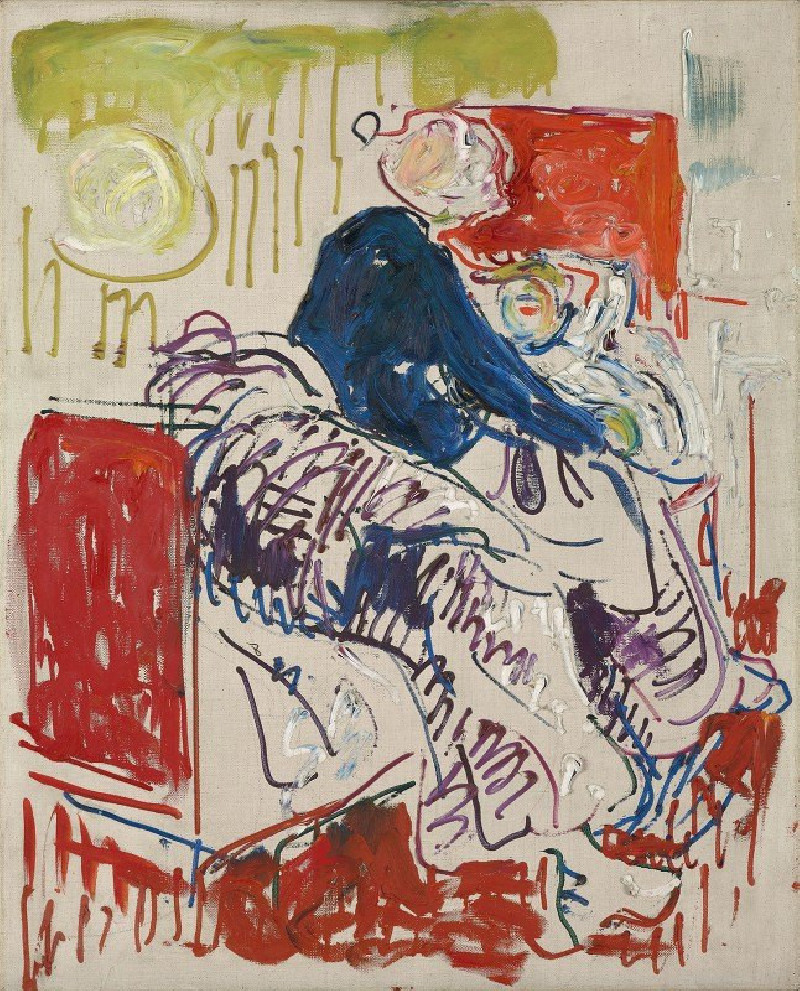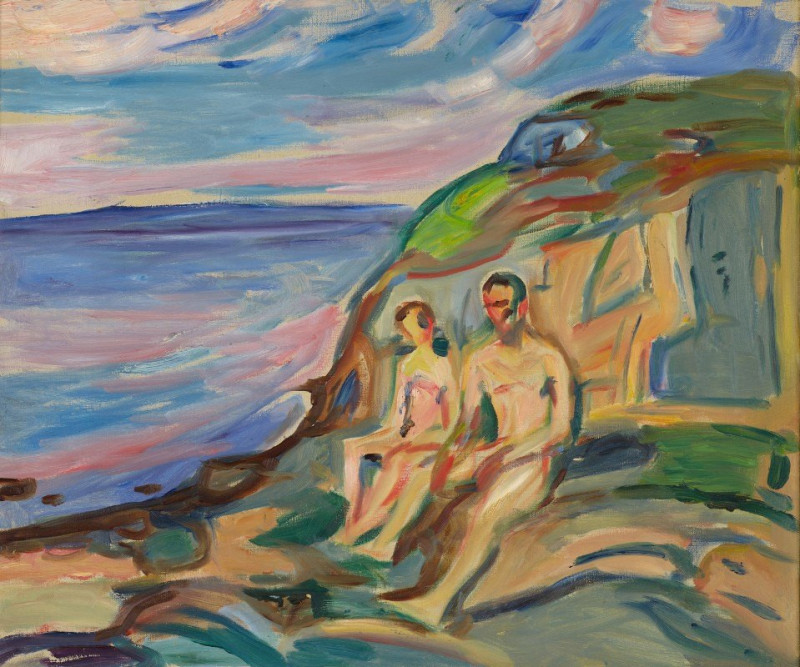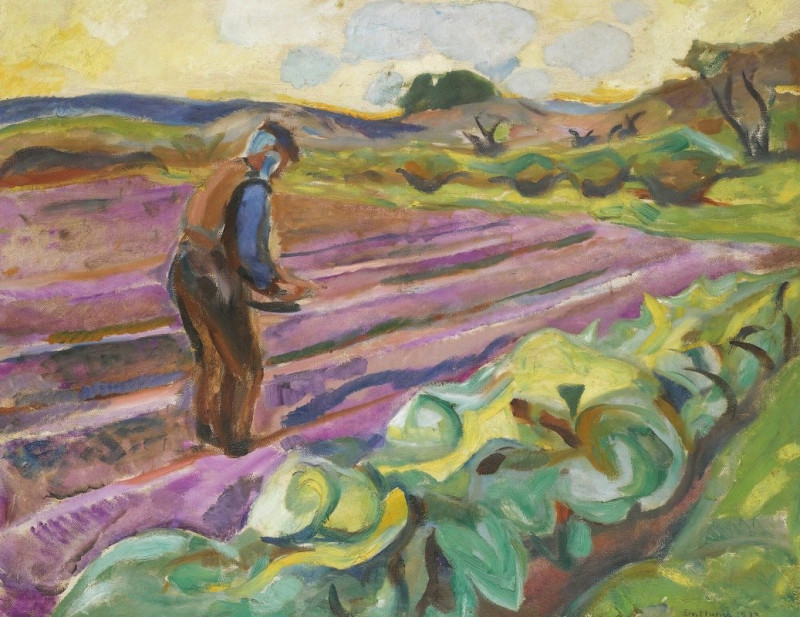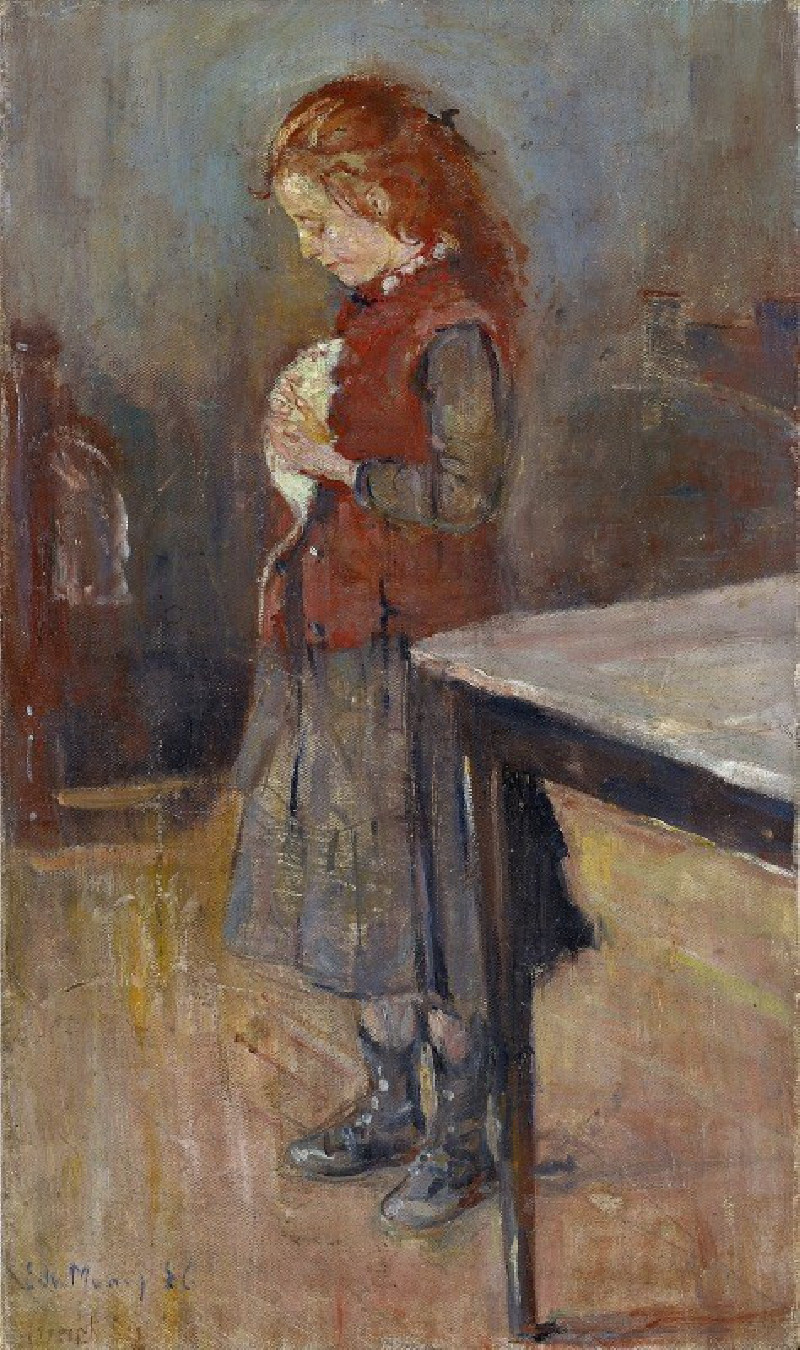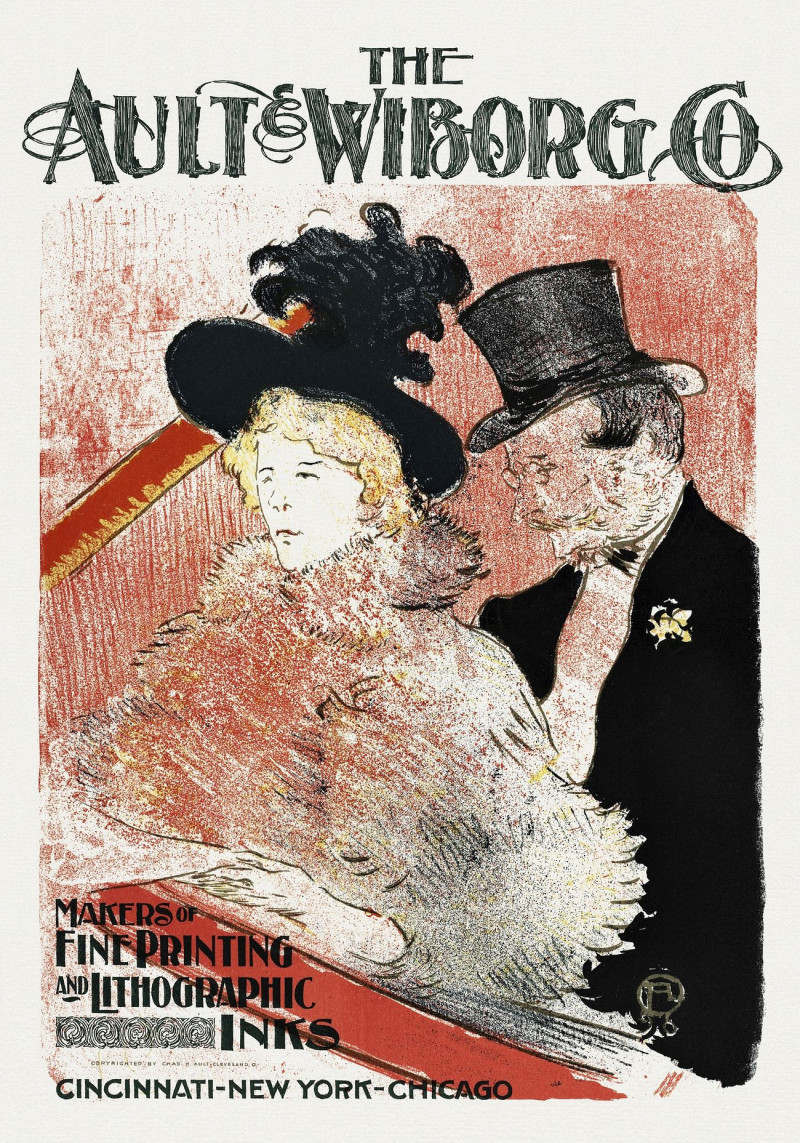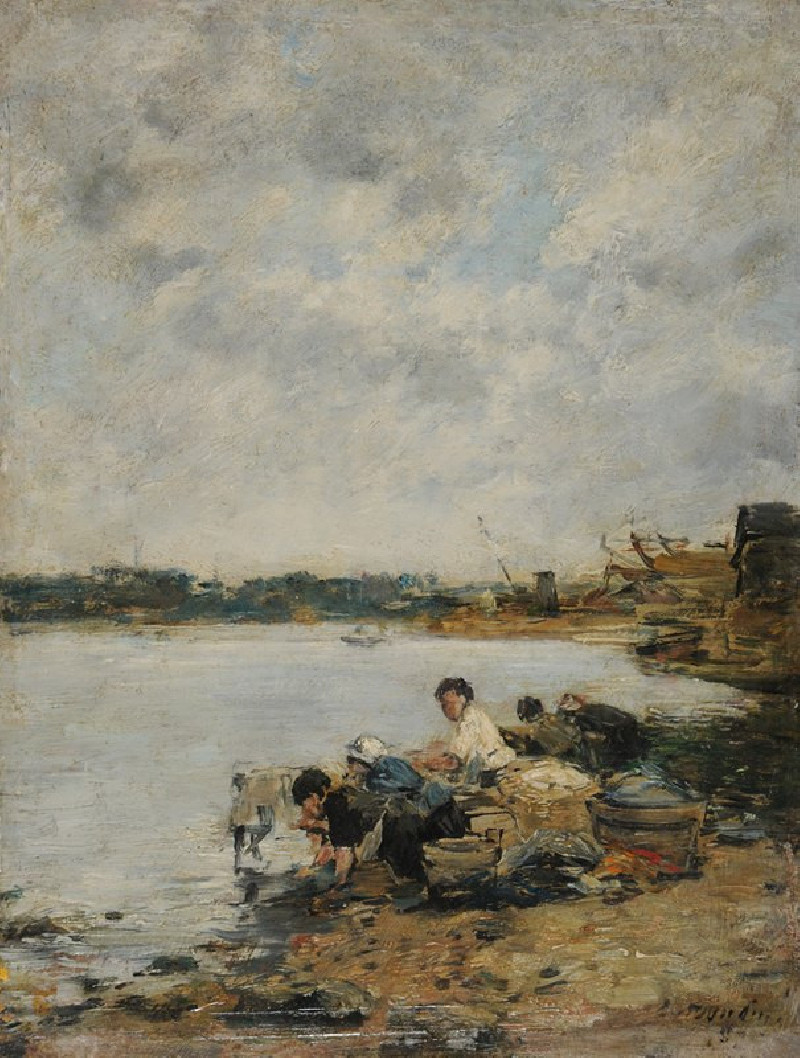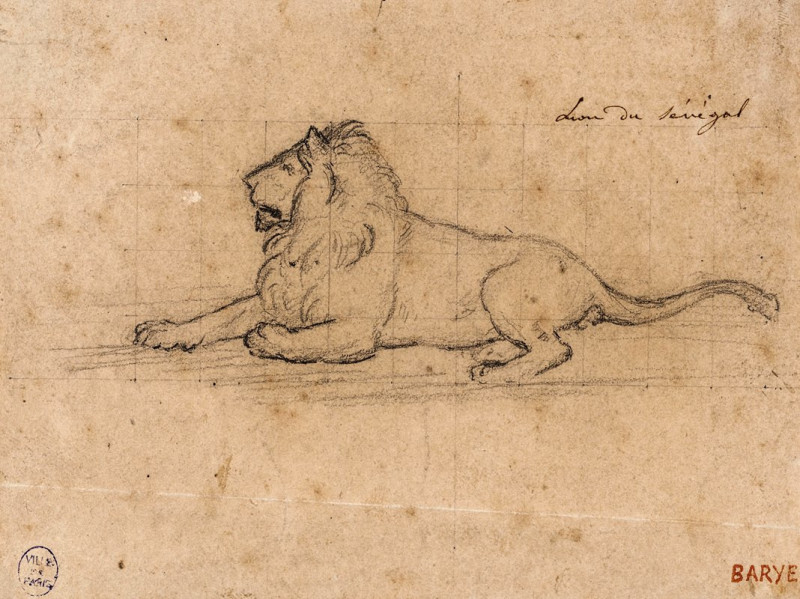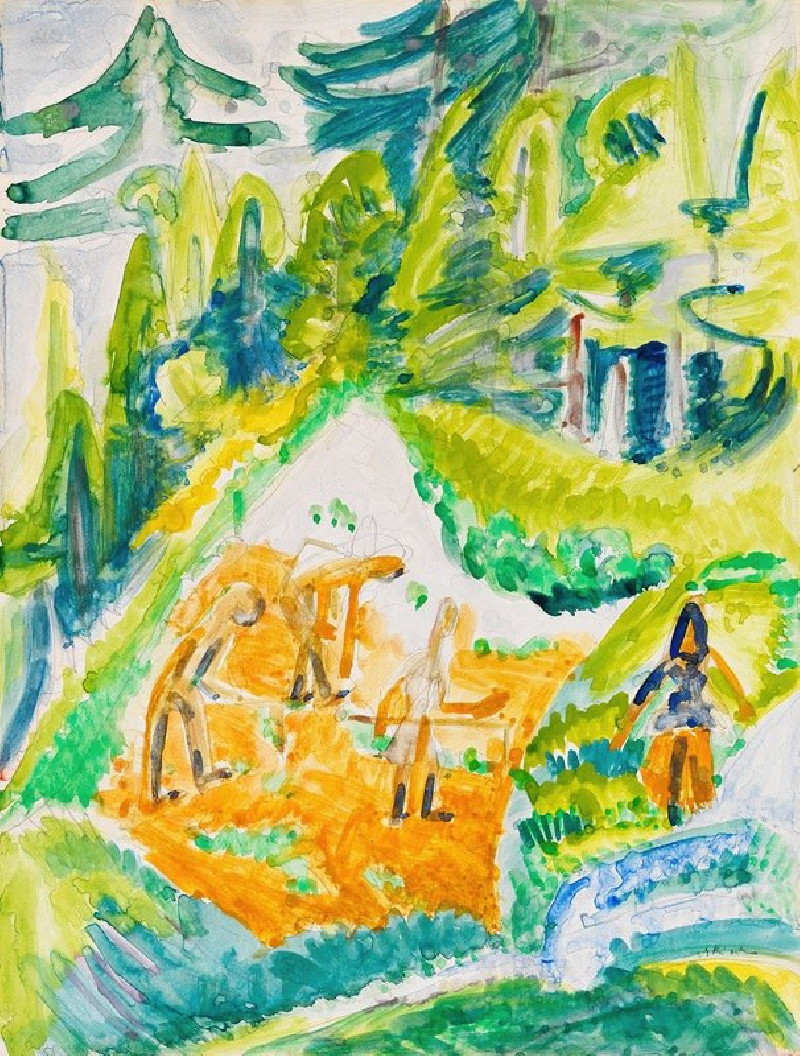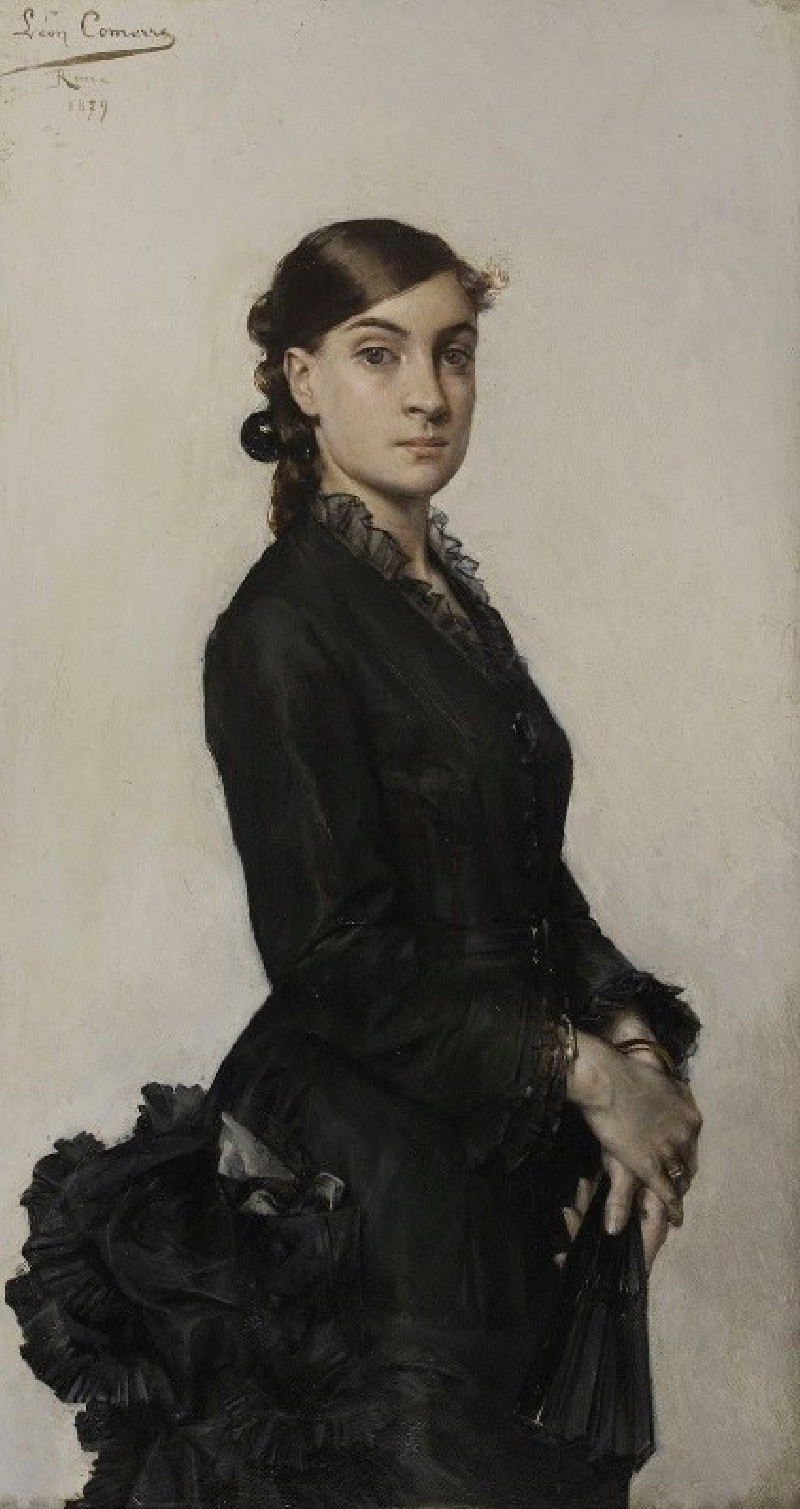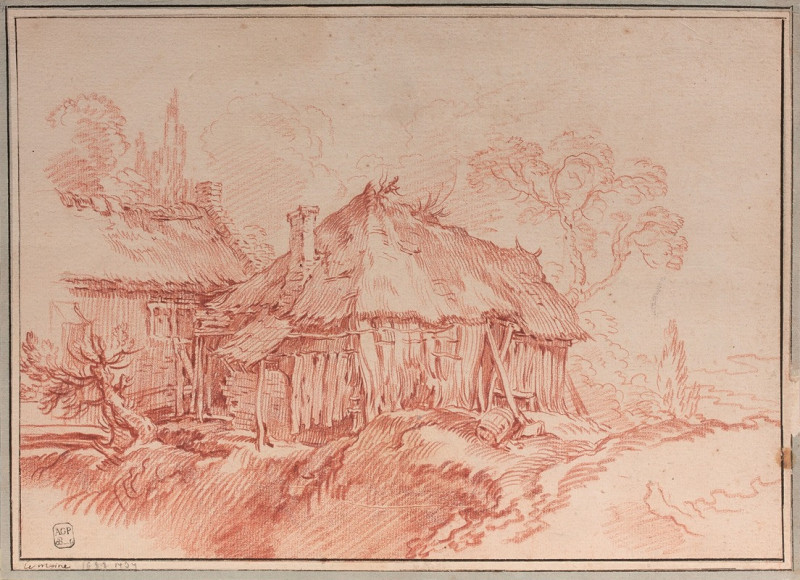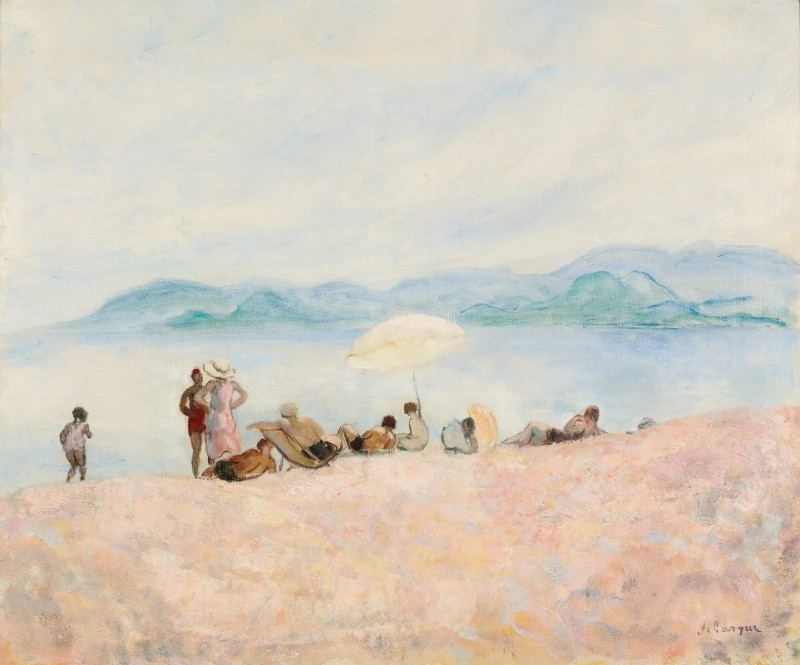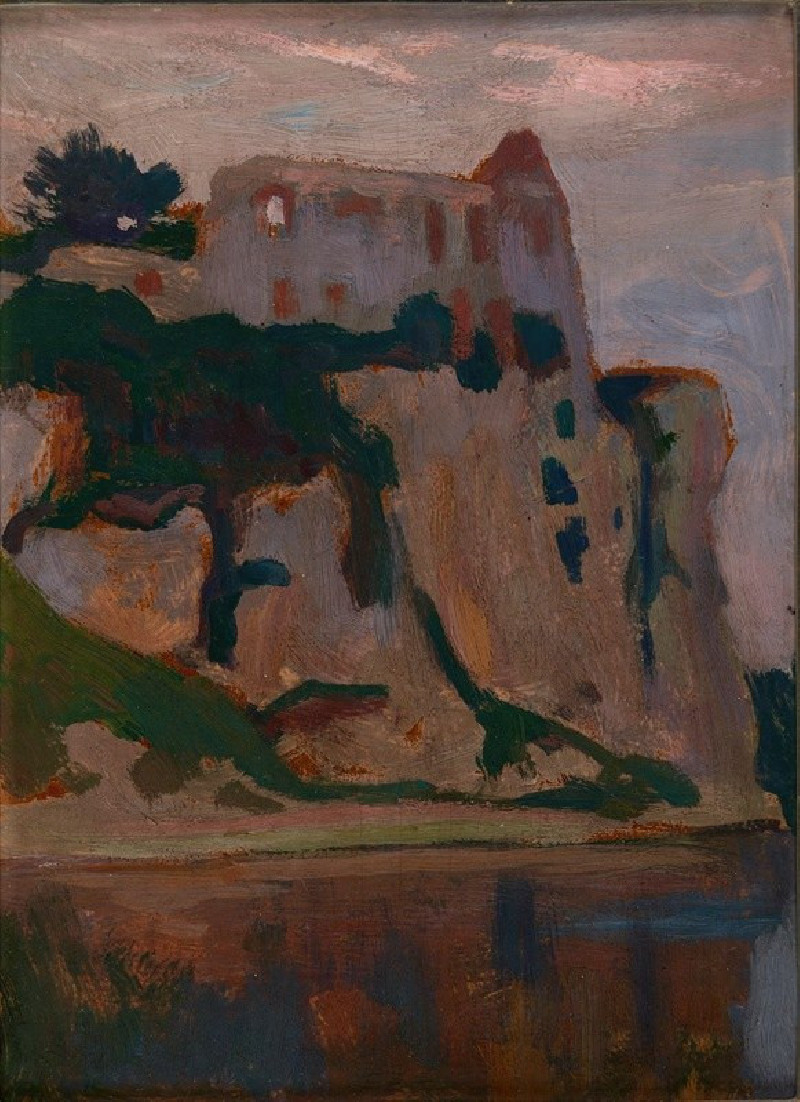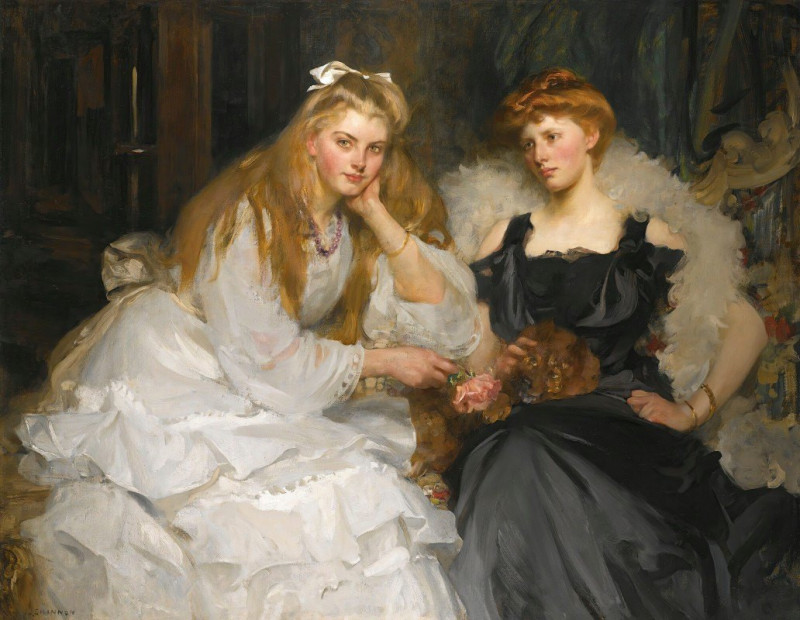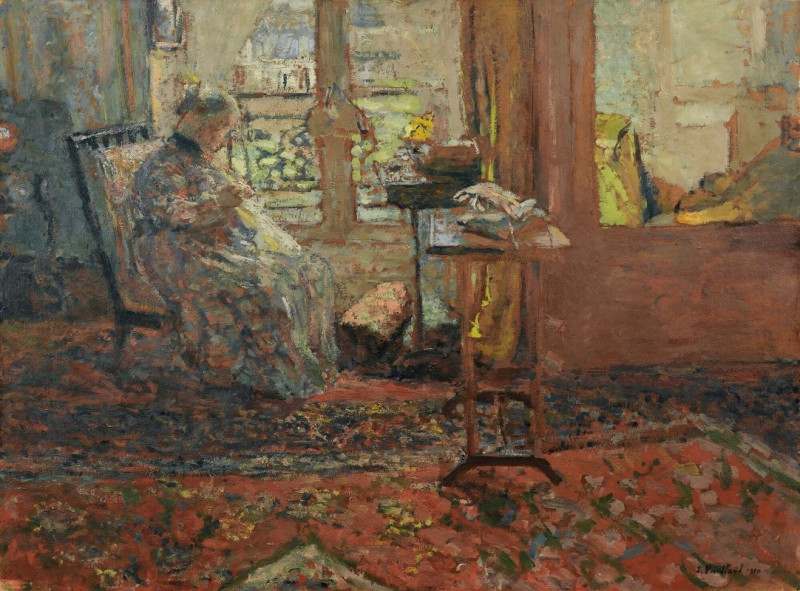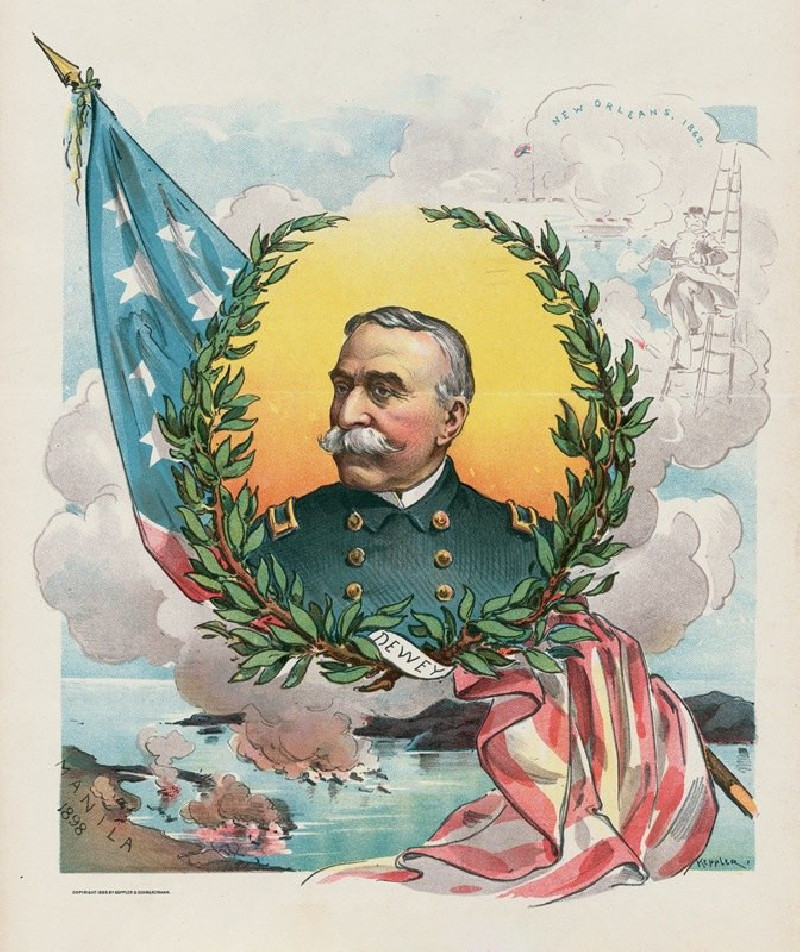Woman Seated on a Couch (1919)
Technique: Giclée quality print
Recommended by our customers
More about this artwork
"Woman Seated on a Couch" by Edvard Munch, painted in 1919, is a vibrant and captivating painting that vividly captures a moment of introspection. The artwork depicts a woman sitting alone on a boldly patterned couch, absorbed in her own thoughts. The woman is dressed in a red blouse and a deep purple skirt, her posture slightly hunched as if weighed down by her contemplations.The composition is filled with bright, expressive colors and dynamic patterns, which are characteristic of Munch's work. The floor and the couch feature a vivid floral pattern, adding a textural depth to the scene. The background is just as lively, with patches of yellow, blue, and green, suggesting a room filled with light and shadow.Munch's brushwork is loose and expressive, contributing to the feeling of emotional depth and complexity conveyed by the painting. The woman’s face is turned away, hiding her expression, which adds to the overall sense of mystery and introspection. The painting pulls the viewer into the woman’s emotional landscape, leaving one to ponder what thoughts or concerns might be occupying her mind.
Delivery
Returns
Edvard Munch (12 December 1863 – 23 January 1944) was a Norwegian painter. His best known work, The Scream (1893), has become one of Western art's most iconic images.
His childhood was overshadowed by illness, bereavement and the dread of inheriting a mental condition that ran in the family. Studying at the Royal School of Art and Design in Kristiania (today's Oslo), Munch began to live a bohemian life under the influence of the nihilist Hans Jæger, who urged him to paint his own emotional and psychological state ('soul painting'); from this emerged his distinctive style.

